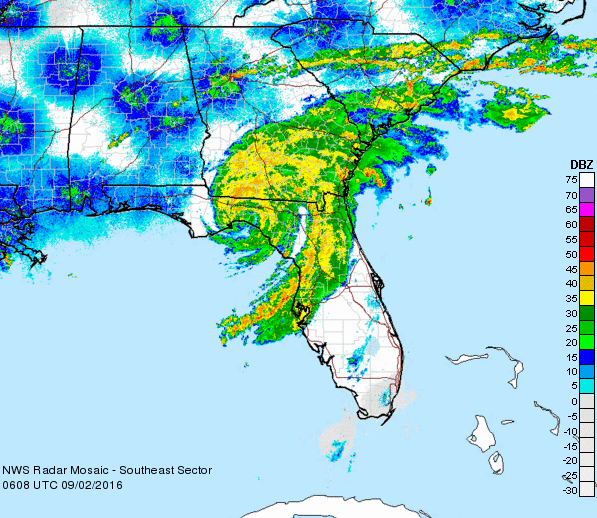Category One Hurricane Hermine, the fourth of this 2016 season, was the first to make landfall on Florida in 10 years. The hurricane was first sighted in the Gulf of Mexico and measured about 400 miles in diameter. It resulted in two deaths and about $500 million in estimated insured property damage. Hermine, with winds of 78 mph, was just strong enough to categorize as a Category One. A category One hurricane has winds from 74-95 mph and is considered to cause minimal damage on making landfall. It causes storm surges from four to five feet. Nevertheless, Hermine bore down with destructive power on the Florida Gulf Coast.
Category Two hurricanes have sustained winds from 96-110 mph and are considered to cause moderate damage upon landfall; Threes have sustained winds from 111-130 and are listed as causing major damage; Fours have sustained winds from131-155 and are listed as causing extreme damage, and Category Five hurricanes have sustained winds above 155 and upon landfall cause catastrophic damage..
Category One Hermine first landed on September 1 on the Florida Panhandle, battering homeowners with winds of up to 78 mph and heavy rainfall of up to 22 inches in some areas. Pasco County, Florida is in the process of recovering. It suffered nearly $89 million dollars of damage. About 250 thousand Floridian homes lost power during Hermine.
After leaving Florida, Hermine progressed through Georgia and up the U.S. East Coast.
By the time Hermine reached the Carolinas, it had been downgraded to a Tropical Storm, and by the time Hermine moved beyond North Carolina on September 3, it was Post-Tropical. Hermine dissipated off into the Atlantic after hovering around the northeast coast of the United States for several days, between September 6 and 8. Increased wave size as a result of the hurricane has exacerbated coastal erosion; mild coastal flooding was experienced particularly along the Jersey Coast, Long Island, and the Delmarva Peninsula (most of Delaware, and portions of Maryland and Virginia).
Hermine, while relatively minimal is considered a wake up call by many in Florida. Hurricane Wilma, the last to make landfall in Florida was a Category 5 storm with winds up to 185 mph and caused roughly $25.4 Billion in damage.
Florida’s Miami-Dade county is currently investing roughly 400-500 million dollars on flood prevention in response to heightened concerns about climate change and the increasing danger of hurricanes as seas rise and major weather events become more frequent and more intense.
Dade County’s recent push to increase flood control is promising because recent estimates showed that Florida’s coast is rather unprepared. Had a hurricane of a greater magnitude made landfall, it is possible that simply repairing the damage in Florida’s two most populous areas, Tampa and Miami, could have cost about $200 billion dollars.
Recent assessments have found that Florida’s low coast is particularly vulnerable to the increasing effects of climate change, as evidenced by increased non-hurricane driven flooding events in Miami Beach.






